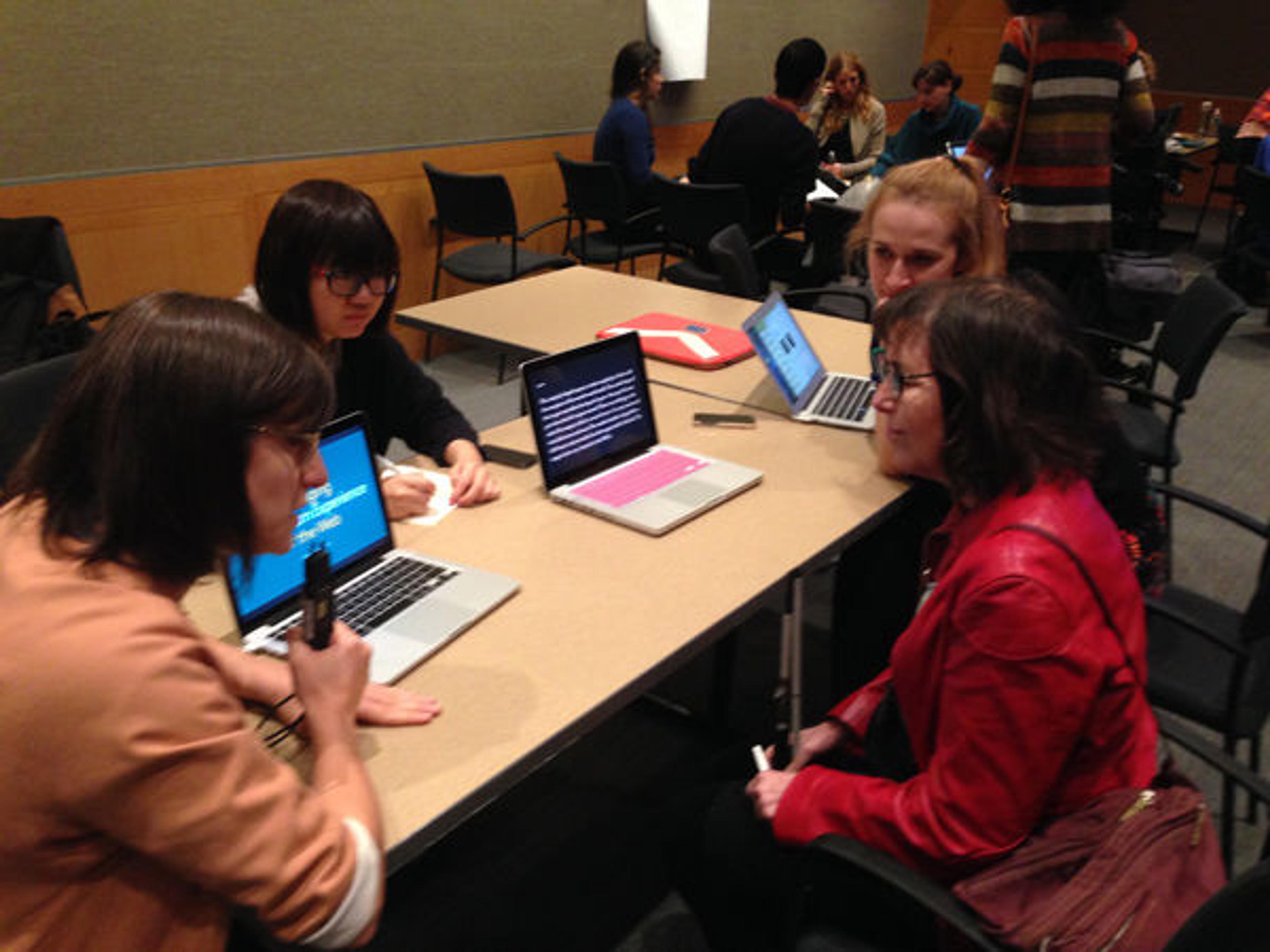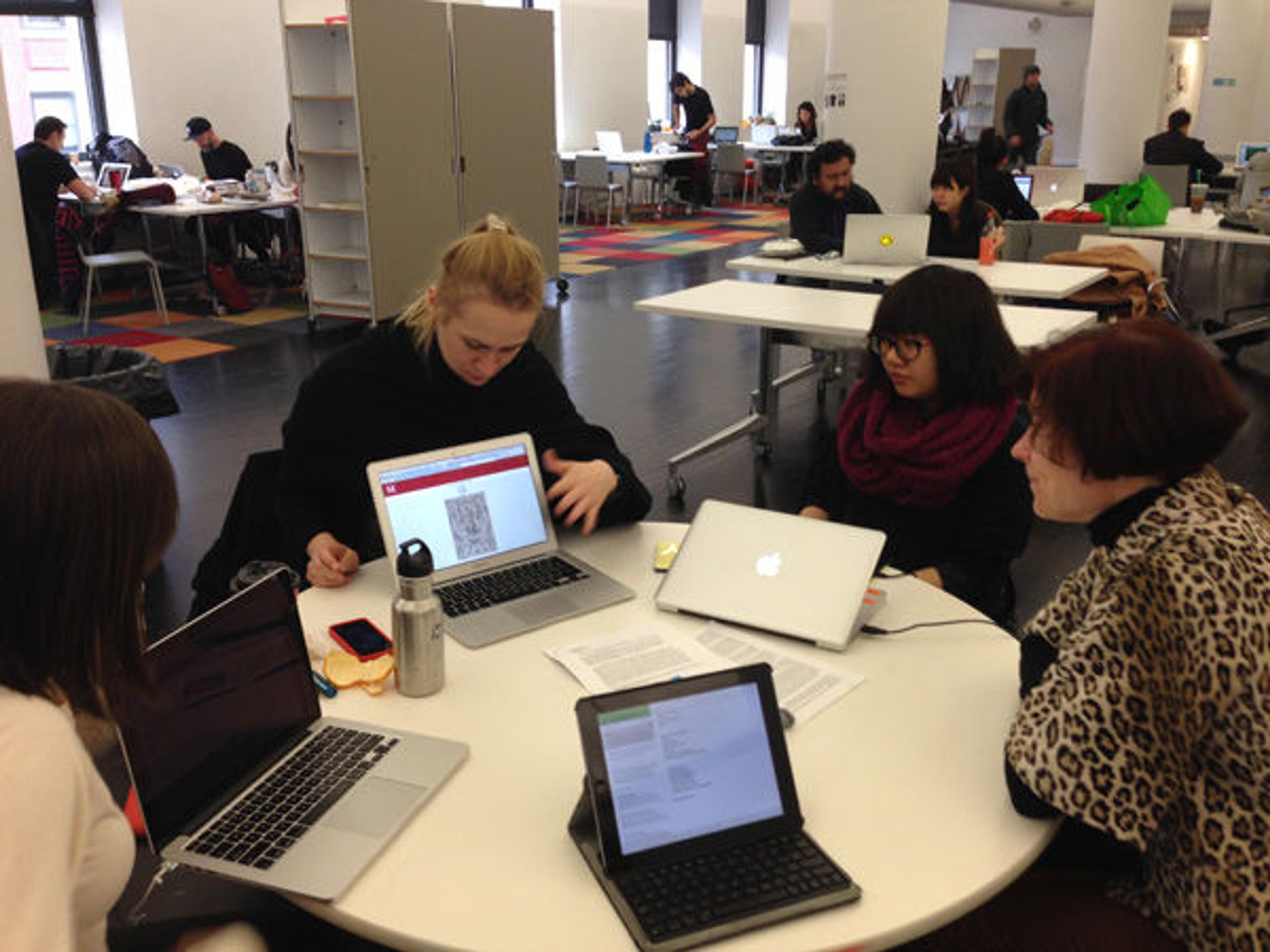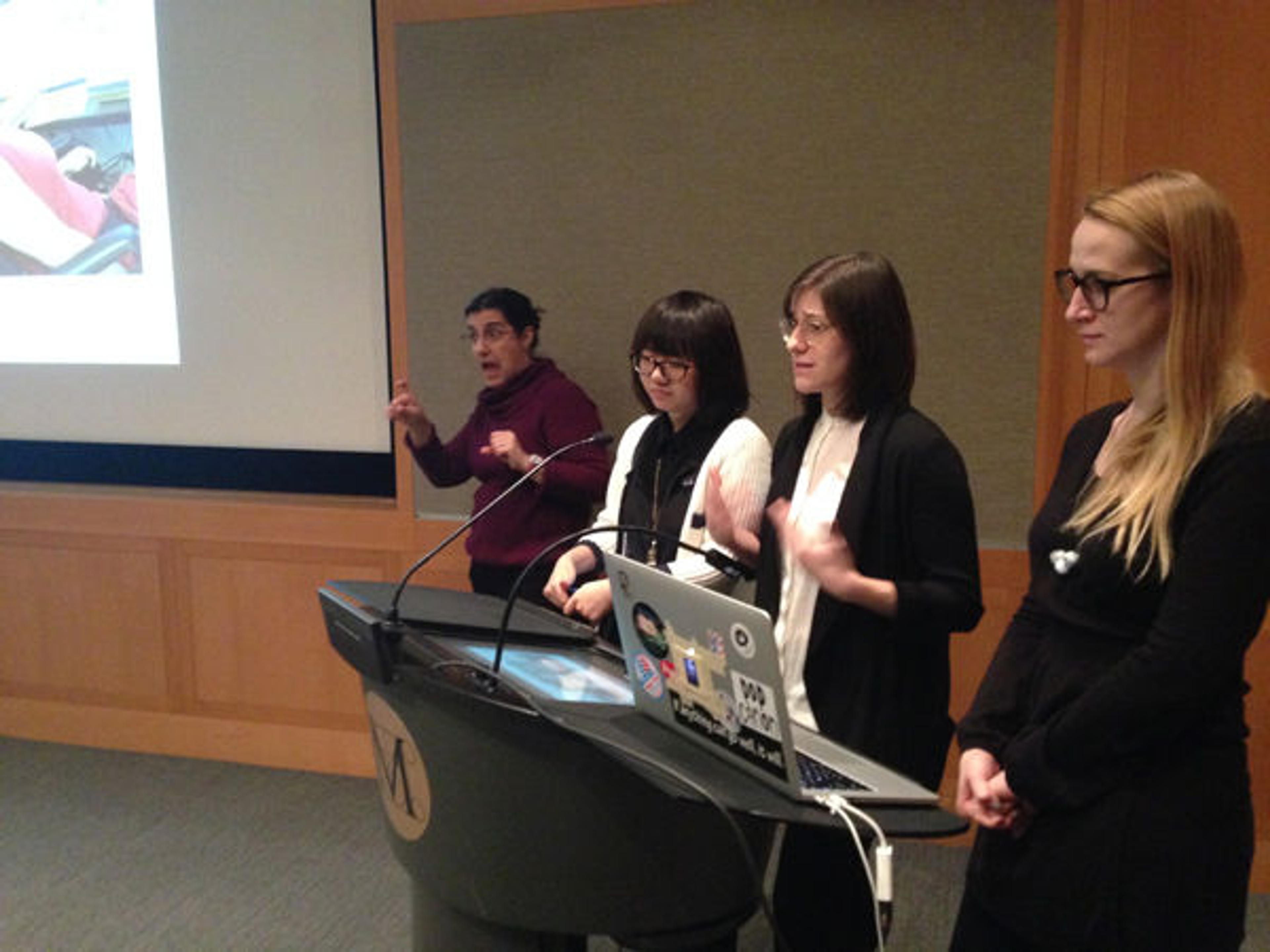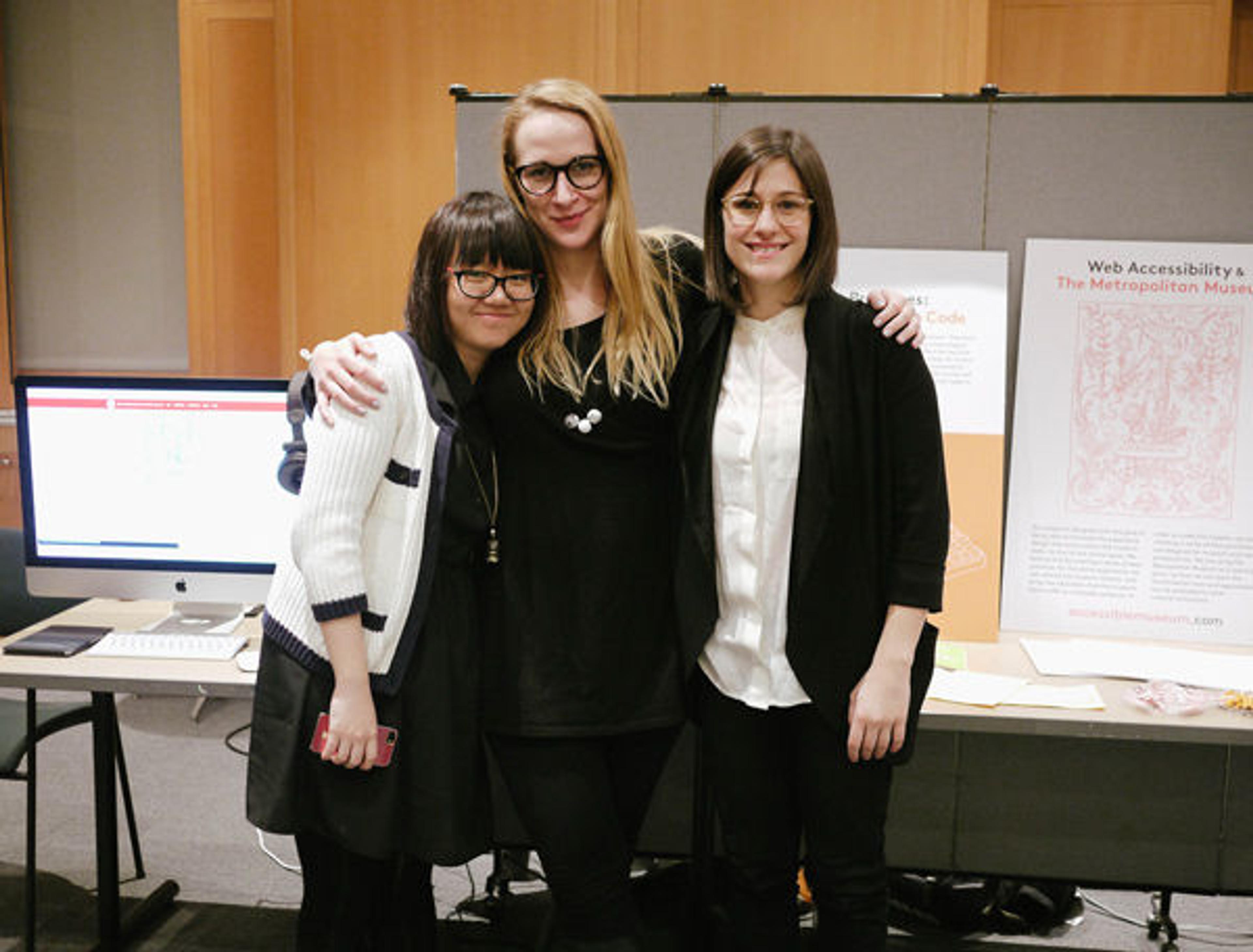Met + Parsons Museum Accessibility Collaboration Workshop: Web Accessibility for Museums
«Digital Underground finishes its Met + Parsons Museum Accessibility Workshop series by taking a look at a project that addresses the need for clear, practical guidelines for creating accessible websites. In the end, the participants in this project produced two documents that can serve as guidelines for coding accessible websites and developing verbal descriptions of art objects. We caught up with the team to ask them some questions about their goals in this workshop, and what they discovered about the museum experience while engaged in the workshop.»
The Participants
The Students
Ye Han
Kamilla Kielbowska
Meagan Durlak
Primary Advisors
Don Katz
Dana Simon
Digital Underground: Describe your project to someone who's never seen it before.
Met + Parsons: Our project focused on translating the overall experience that exists within the museum walls to that of the online world, particularly for those that are visually impaired or rely on a screen reader. In assembling a series of best practices for the online experience, we hope to be able to create a launching pad for other cultural institutions to start the process of building more accessible websites from the earliest stages of project development.
The two best practices we produced are designed for museum and creative professionals alike. The first one, "Creating Accessible Code," explores how web developers can start to make small changes to their work, changes that would actually make the usability experience that much more enjoyable for someone who relies on a screen reader. The second document, "Writing Visual Descriptions," examines how a museum professional can author written descriptions of objects so that those who are visually impaired or rely on screen readers can still experience the artwork in an exciting, comprehensive way.

Digital Underground: How did you come to the idea for your project? What were your inspirations?
Met + Parons: We were inspired by the concept of retrofitting, or rather, by how this technique proves to be a truly unacceptable way of designing for accessibility. We thought it was interesting how web designers today are traditionally retrofitting a website to make it more "accessible" without really considering what the usability experience is like for the end user. Today, most people who rely on screen readers have come to terms with a poor usability experience, but we wanted to improve upon this.
Digital Underground: Of all the advisors and industry partners, with whom did you work the most closely and why?
Met + Parsons: We worked closest with Don Katz since he was the most candid and vocal about what he would and wouldn't like to experience on a website. He was very willing to show us how he worked with different types of technology and he user-tested just about everything we designed, which was incredibly helpful. Dana Simon also provided a lot of great feedback and insight.

Project advisor Dana Simon reviewing the team's work
Digital Underground: What were some surprising discoveries you made along the way, or some assumptions you had made that were challenged? Were there aspects of your design that didn't work the way you expected? Were there parts of your plan you had to jettison because of time or practicality?
Met + Parsons: It was surprising how everyone said that Apple's iOS had the best accessibility functionality of any phone, since it seemed incredibly confusing and poorly designed to us. This inspired our group to think about the ways today's technology could achieve "true" accessibility. An initial assumption that inspired the project was thinking that the existing tools for web accessibility were incredibly thorough and actually improved the online experience! When we dug a little deeper and started to develop some of our concepts, we realized that this wasn't actually the case and we immediately began to think about moving some of these features into the earlier stages of the project.
If we had had more time it would have been nice to build another prototype that could be used by a more traditional design agency, so we could test how some of these best practices could be applied to the daily workflow of a non-museum platform.

Rebecca McGinnis provides feedback on a version of a Collection Online object page optimized for low-vision visitors
Digital Underground: If you had another semester to continue working on the project, what would you do?
Met + Parsons: We would try to populate the website with more content, implement more user testing as a way to further polish our wireframes and designs, and try to streamline our work into the Met's website a bit more. It would be great to find even more ways to make it easier to implement some of these concepts.
Digital Underground: What questions do you still have about your work?
Met + Parsons: We still want to explore exactly how these best practices can be designed to be better deployed into the traditional website development process—as well as figuring out how this type of work could be translated into a full-time position at the Met!
Digital Underground: When your final project was presented to a group of people who were seeing it for the first time, what was some notable feedback you received?
Met + Parsons: We received a lot of very positive feedback about the written descriptions, and a wide variety of user types saw value in being able to use this functionality.

Ye, Meagan, and Kamilla present their research at the Met + Parsons Access Expo
Digital Underground: How has this course affected how you think about accessibility, as well as the needs and expectations of people with disabilities?
Met + Parsons: We all feel that this course immensely affected the way we think about accessibility—particularly how shocking it was that the outdated process of retrofitting was still a common practice. It was also incredibly astounding to watch Don [Undeen] use his iPhone and realize that a lot of the simple functionalities we take for granted have a whole new meaning for someone who is visually impaired.
Digital Underground: How has this course affected how you think about museums?
Met + Parsons: When you visit a museum, you don't necessarily think about what happens behind the scenes—the amount of work that goes into curating and organizing the museum experience from top to bottom—so that was fantastic to see from an insider's perspective.
Digital Underground: What else would you like to tell us about your experience in the class?
Met + Parsons: We all loved this class. It was great to be asked to challenge some of the work that we do on a daily basis (web development) and think about the ways in which we can transform our own practice into something that aids a wide spectrum of end users.

From left to right: Ye, Kamilla, and Meagan
Related Links
Web Accessibility for Museums final deliverables
Web Accessibility for Museums prototype presentation
Writing Visual Descriptions: Best Practices (PDF)
Creating Accessible Code: Best Practices for Web Accessibility (PDF)
Digital Underground: Posts related to the Met + Parsons Museum Accessibility Collaboration Workshop
Don Undeen
Don Undeen was formerly the senior manager of MediaLab in the Digital Department.
Rebecca McGinnis
Rebecca McGinnis is a senior Museum educator overseeing the Met's Access and Community programs.